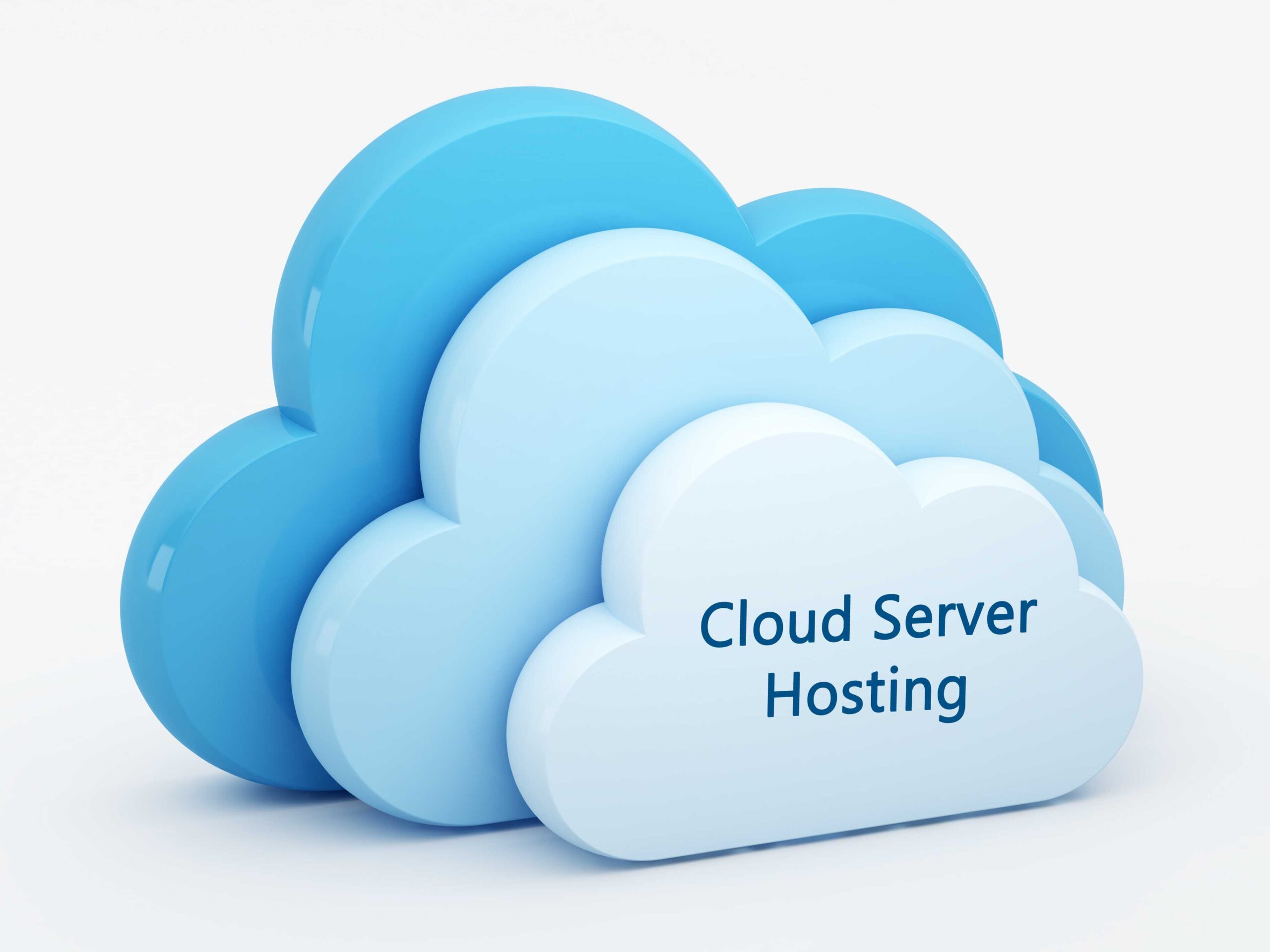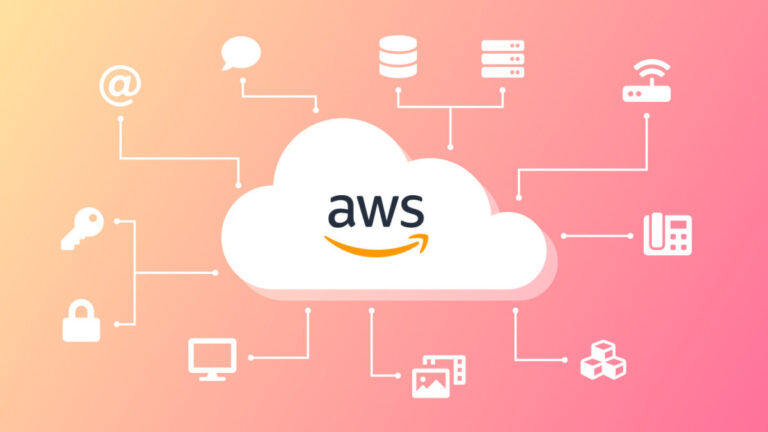Cloud Server Hosting : A Comprehensive Guide
Cloud Server Hosting has become an essential solution for modern businesses looking for flexible, scalable, and dependable IT infrastructure. To understand the significance of cloud server hosting, it’s crucial to comprehend the intricacies of cloud computing and how it differs from traditional on-premise hosting.
Defining Cloud Server Hosting
Cloud server hosting uses virtual servers that are spread across a network of interconnected physical servers. With this infrastructure, users can access computing resources as needed without the need for physical hardware maintenance or management. This model is different from traditional hosting, as it offers greater efficiency and agility.
Understanding Cloud Computing
Cloud computing is the delivery of computing services over the Internet. It allows users to access resources and applications from anywhere and can accommodate fluctuating workloads.
GoDaddy Cloud Server: Empowering Your Online Presence
Evolution of Server Hosting: From On-Premise to Cloud
In the past, companies used to rely on on-premise server hosting, which meant that they had physical servers located on their premises. However, this approach had certain limitations in terms of scalability, maintenance costs, and efficient resource utilization. The emergence of cloud computing transformed the hosting landscape by offering a flexible and cost-effective alternative to traditional infrastructure.
Benefits of Cloud Server Hosting
Cloud hosting is the way forward for businesses of all sizes. With its numerous benefits, it provides a competitive edge that can help businesses stay ahead of the game. Don’t miss out on the opportunity to take advantage of this technology. Adopt cloud hosting today and watch your business grow.
Scalability and Flexibility
Cloud server hosting enables organizations to scale computing resources up or down according to their evolving needs. Whether experiencing sudden spikes in traffic or planning for long-term growth, the cloud provides the agility to adapt quickly and efficiently.
Cost-Effectiveness
By eliminating the need for upfront hardware investments and reducing ongoing maintenance costs, cloud server hosting offers a cost-effective solution for businesses. Pay-as-you-go pricing models ensure that organizations only pay for the resources they consume, optimizing IT expenditure.
Reliability and Uptime
Cloud server hosting providers typically offer robust infrastructure with built-in redundancy and failover mechanisms. This ensures high availability and minimizes the risk of downtime, thereby enhancing business continuity and customer satisfaction.
Understanding the Infrastructure
Cloud server hosting infrastructure is a powerful system that combines multiple components to deliver superior computing resources to users. Experience the benefits of a cloud-based infrastructure today!
Virtualization
Virtualization technology enables the creation of virtual instances of servers, storage, and networking resources within a physical hardware environment. This allows for efficient resource utilization and enables the dynamic allocation of computing resources based on demand.
Resource Pooling
In cloud server hosting, resources such as CPU, memory, storage, and bandwidth are pooled together to serve multiple users simultaneously. This pooling mechanism enables efficient resource allocation and maximizes utilization, contributing to cost savings and scalability.
Automation
Automation plays a crucial role in cloud server hosting, streamlining repetitive tasks such as provisioning, configuration management, and scaling. By automating routine processes, organizations can improve efficiency, reduce human error, and accelerate time-to-market for applications and services.
Best Server Cloud: Navigating the Landscape of Cloud Computing
Types of Cloud Server Hosting
Cloud server hosting encompasses various deployment models, each offering distinct advantages and use cases.
Public Cloud
Third-party service providers offer computing resources like virtual servers, storage, and networking over the Internet. This cloud hosting model is scalable, affordable, and easy to access, making it suitable for startups, SMBs, and enterprises.
Private Cloud
Private cloud hosting involves the deployment of dedicated cloud infrastructure exclusively for a single organization. This model offers enhanced security, customization, and control over resources, making it suitable for businesses with stringent compliance requirements or specific performance needs.
Hybrid Cloud
Hybrid cloud hosting combines elements of both public and private cloud environments, allowing organizations to leverage the benefits of each. By integrating on-premise infrastructure with public cloud services, businesses can achieve greater flexibility, scalability, and data sovereignty.
Choosing the Right Provider
Selecting the right cloud server hosting provider is a critical decision that can significantly impact the performance, security, and scalability of your IT infrastructure.
Factors to Consider
When it comes to selecting a cloud hosting provider, it is important to carefully evaluate several key factors. By doing so, you can ensure that you choose a provider who can meet your needs and help your business succeed in the cloud. Don’t leave this decision to chance – take the time to make an informed choice.
Performance
Performance encompasses factors such as computing power, network speed, and storage performance. Choose a provider with a robust infrastructure, low latency, and high throughput to ensure optimal performance for your applications and services.
Security
Security is paramount in cloud hosting, given the sensitive nature of data and applications hosted in the cloud. Look for providers that implement stringent security measures, including encryption, access controls, and intrusion detection systems, to protect your assets from cyber threats and unauthorized access.
Support and Maintenance
Reliable technical support and proactive maintenance are essential for ensuring the smooth operation of your cloud infrastructure. Choose a provider that offers responsive customer support, SLA-backed uptime guarantees, and regular software updates to minimize disruptions and downtime.
Popular Cloud Hosting Providers
Several leading cloud hosting providers dominate the market, each offering a unique set of features, services, and pricing options.
Amazon Web Services (AWS)
AWS is a leading provider of cloud computing services that includes a wide range of offerings such as computing, storage, databases, AI/ML, and more. With a global network of data centers and a vast ecosystem of partners and third-party integrations, AWS provides unparalleled scalability, reliability, and flexibility for businesses of any size.
Microsoft Azure
Microsoft Azure is a cloud computing platform and services offered by the tech giant Microsoft. It has a wide range of services, including IaaS, PaaS, and SaaS, that cater to different use cases, such as web hosting, app development, AI/ML, and IoT. Azure is a popular choice for organizations that want seamless interoperability and hybrid cloud deployments because it integrates with Microsoft’s enterprise solutions, such as Office 365 and Dynamics 365.
Google Cloud Platform (GCP)
Google Cloud Platform (GCP) is a cloud computing service developed by Google. It provides a reliable infrastructure and a wide range of tools to create, deploy, and manage applications. GCP is particularly strong in data analytics and machine learning, which enable users to extract insights from their data. Additionally, GCP’s global network infrastructure guarantees high performance and availability, making it a great choice for mission-critical workloads.
Setting Up Your Cloud Server
Deploying a cloud server involves several steps, from selecting the instance type and configuration to configuring security settings and optimizing performance.
Steps to Deploy a Cloud Server
Deploying a cloud server typically follows a standardized process, which may vary depending on the chosen provider and deployment model.
Selecting Instance Type and Configuration
The first step in deploying a cloud server is to choose the appropriate instance type and configuration based on your workload requirements. Consider factors such as CPU, memory, storage, and network performance, as well as any specialized hardware or software requirements.
Choosing an Operating System
Once you’ve selected the instance type, you’ll need to choose an operating system (OS) for your cloud server. Most cloud providers offer a variety of OS options, including Linux distributions (e.g., Ubuntu, CentOS) and Windows Server editions. Select the OS that best suits your application stack, development environment, and familiarity with the platform.
Configuring Security Settings
Security should be a top priority when setting up a cloud server. Configure security settings such as firewalls, access controls, encryption, and identity and access management (IAM) policies to protect your data and infrastructure from unauthorized access, malware, and other security threats.
Best Practices for Configuration
Optimizing the configuration of your cloud server is essential for maximizing performance, efficiency, and security.
Optimizing Performance
Performance optimization involves fine-tuning various aspects of your cloud server configuration to ensure optimal resource utilization and responsiveness.
Implementing Backups and Disaster Recovery
Implementing robust backup and disaster recovery (DR) mechanisms is critical for safeguarding your data and ensuring business continuity in the event of unforeseen incidents.
Managing Your Cloud Server
It is crucial to continuously monitor, maintain, and manage resources to ensure the smooth operation and performance of your cloud server.
Monitoring and Maintenance
Regular monitoring and maintenance help identify and address potential issues before they escalate into critical problems.
Utilizing Monitoring Tools
Leverage monitoring tools and dashboards provided by your cloud hosting provider to track key performance metrics, monitor resource usage, and identify bottlenecks or anomalies.
Regular Updates and Patches
Stay up-to-date with software updates, security patches, and firmware upgrades to mitigate vulnerabilities and ensure the stability and security of your cloud server environment.
Scaling Resources
Scalability is a key advantage of cloud server hosting, allowing you to adjust computing resources dynamically to meet changing demand.
Vertical Scaling
Vertical scaling involves adding more resources (e.g., CPU, memory, storage) to your existing cloud server instance to accommodate increased workload requirements.
Horizontal Scaling
Horizontal scaling, also known as scaling out, involves adding more instances of your application across multiple servers to distribute the workload and improve performance and reliability.
Auto-scaling
Auto-scaling enables automatic adjustment of computing resources based on predefined triggers or thresholds, such as CPU utilization or incoming traffic volume. This ensures optimal resource allocation and cost efficiency without manual intervention.
Ensuring Security
Security is a top concern in cloud hosting, given the shared nature of the infrastructure and the potential risks associated with data breaches and cyber-attacks.
Importance of Security in Cloud Hosting
Security should be a top priority in cloud hosting due to the inherent risks associated with hosting sensitive data and applications in a shared environment.
Data Protection
Implement robust data protection measures, including encryption, access controls, and data loss prevention (DLP) policies, to safeguard sensitive information from unauthorized access, leakage, or tampering.
Compliance Requirements
Ensure compliance with relevant industry regulations, data protection laws, and privacy standards by implementing security controls and practices that align with regulatory requirements.
Strategies for Securing Your Cloud Server
Implementing effective security strategies and best practices is essential for protecting your cloud server infrastructure from cyber threats and vulnerabilities.
Identity and Access Management (IAM)
Implement granular access controls and role-based access control (RBAC) policies to restrict access to sensitive resources and enforce least privilege principles.
Encryption
Encrypt data at rest and in transit using strong encryption algorithms and secure protocols to prevent unauthorized access and protect confidentiality.
Intrusion Detection and Prevention
Deploy intrusion detection and prevention systems (IDPS) to monitor network traffic, detect suspicious activities or anomalies, and block or mitigate potential security threats in real time.
Optimizing Performance
Optimizing the performance of your cloud server infrastructure is crucial for delivering a seamless user experience, maximizing efficiency, and minimizing operational costs.
Performance Metrics to Monitor
Monitor key performance metrics to gauge the health and performance of your cloud server infrastructure and identify areas for improvement.
Response Time
Response time measures the time it takes for your server to respond to requests from clients or users. Lower response times indicate better performance and responsiveness.
Throughput
Throughput refers to the amount of data transmitted or processed by your server within a given time. Higher throughput indicates better network performance and capacity to handle concurrent requests.
Scalability
Scalability measures the ability of your cloud server infrastructure to accommodate increasing workload demands without compromising performance or reliability. Evaluate scalability based on factors such as resource availability, auto-scaling capabilities, and horizontal scaling options.
Techniques for Performance Optimization
Implement performance optimization techniques to enhance the efficiency and responsiveness of your cloud server infrastructure.
Caching
Utilize caching mechanisms to store frequently accessed data or resources closer to the user, reducing latency and improving response times. Implement caching at various layers of your application stack, such as web servers, databases, and content delivery networks (CDNs), to accelerate content delivery and improve user experience.
Load Balancing
Implement load balancing mechanisms to distribute incoming traffic evenly across multiple servers or instances, ensuring optimal resource utilization and preventing server overload or downtime. Load balancers can dynamically adjust traffic routing based on server health, availability, and performance metrics.
Content Delivery Networks (CDNs)
Deploy content delivery networks (CDNs) to cache and deliver static assets, such as images, videos, and files, from geographically distributed edge servers closer to end-users. CDNs improve content delivery speed, reduce latency, and offload origin server traffic, resulting in faster page load times and a better user experience.
Handling Downtime and Disaster Recovery
Planning for downtime and implementing robust disaster recovery strategies are essential for minimizing service disruptions, mitigating data loss, and ensuring business continuity.
Planning for Downtime
Anticipate and plan for potential downtime scenarios, such as hardware failures, network outages, or software glitches, to minimize their impact on your operations and users.
Identifying Potential Failure Points
Conduct a thorough risk assessment to identify potential failure points or single points of failure (SPOFs) in your cloud server infrastructure, such as hardware components, network connections, or software dependencies. Implement redundancy and failover mechanisms to mitigate these risks and improve resiliency.
Implementing Redundancy
Deploy redundant components, such as backup servers, redundant power supplies, and mirrored storage arrays, to ensure high availability and fault tolerance. Redundancy helps maintain service continuity and data integrity in the event of hardware or software failures.
Disaster Recovery Strategies
Develop and implement comprehensive disaster recovery (DR) strategies to restore operations and data integrity in the event of catastrophic events, such as natural disasters, cyber-attacks, or system failures.
Backup and Restore Procedures
Regularly backup critical data, applications, and configurations to offsite locations or cloud storage providers to protect against data loss and corruption. Define backup schedules, retention policies, and recovery objectives to ensure timely backups and efficient restoration of services.
Failover Mechanisms
Implement failover mechanisms, such as active-passive or active-active clustering, to automatically redirect traffic to redundant servers or data centers in the event of a primary system failure. Test failover procedures regularly to verify their effectiveness and minimize downtime during actual incidents.
Future Trends in Cloud Server Hosting
As technology continues to evolve, several emerging trends are shaping the future of cloud server hosting, offering new opportunities and challenges for businesses.
Edge Computing
Edge computing is an emerging paradigm that brings computing resources closer to the point of data generation or consumption, such as IoT devices, sensors, and mobile devices. By processing data locally at the edge of the network, edge computing reduces latency, bandwidth usage, and reliance on centralized cloud infrastructure, making it ideal for real-time applications and use cases with strict latency requirements.
Serverless Architecture
Serverless architecture, also known as Function as a Service (FaaS), abstracts the underlying infrastructure and enables developers to focus on writing and deploying code without managing servers or provisioning resources. Serverless platforms automatically scale resources based on demand, charging users only for the compute time consumed by their functions. This approach offers greater agility, scalability, and cost-efficiency for event-driven and microservices-based applications.
Impact of AI and Machine Learning
Artificial intelligence (AI) and machine learning (ML) technologies are increasingly being integrated into cloud server hosting platforms to enhance automation, security, and performance.
Sustainability Initiatives in Cloud Computing
As concerns about environmental sustainability and carbon emissions continue to grow, cloud providers are investing in renewable energy sources, energy-efficient infrastructure, and carbon offset programs to reduce their environmental footprint and promote sustainable practices.
Conclusion
Cloud server hosting offers numerous benefits, such as scalability, flexibility, and cost-effectiveness, making it an essential solution for modern businesses. To make the most of cloud computing, organizations need to understand the infrastructure, choose the right provider, and follow best practices for configuration, security, and performance optimization. By doing so, businesses can drive innovation, agility, and growth. As technology continues to evolve, staying up-to-date with emerging trends, and embracing continuous improvement and innovation will be crucial to unleash the full potential of cloud server hosting for the future.






I like this weblog very much, Its a rattling nice spot to
read and find info.Blog range